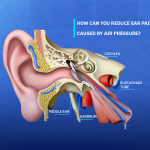Lymph Nodes
When you catch a cold or suffer from a sore throat, you might notice a slight swelling in your neck, this swelling is often caused by enlarged lymph nodes, which is a sign that your immune system is working hard to fight off the infection, while this reaction is usually normal, persistent swelling or the presence of other symptoms may indicate a more serious health condition. So, what is the relationship between lymph nodes and ENT (Ear, Nose, and Throat) diseases?
In this article, we will explore everything you need to know about the lymph nodes in the neck and their connection to ENT disorders.
- What are Lymph Nodes?
- Locations of Lymph Nodes in the body
- Functions of the Lymph Nodes in the neck
- The relationship between Lymph Nodes and ENT (Ear, Nose, and Throat) Diseases
- Causes of Inflammation and Swelling of Lymph Nodes in the Neck
- Diagnosis of enlarged Lymph Nodes in the neck
What are Lymph Nodes?
Also known as lymph glands, lymph nodes are small, bean-shaped structures that are a natural part of the human body, they are a key component of the immune system and are concentrated in specific areas, especially where pathogens are most likely to enter, such as the head and neck regions. Lymph nodes act as the body’s first line of defense, when germs or microbes enter the body and reach these nodes, the immune system responds immediately, immune cells within the nodes are activated to attack and eliminate the invading organisms, preventing them from spreading through the bloodstream to other parts of the body.
Locations of Lymph Nodes in the body
Lymph nodes are distributed throughout various parts of the body, with a high concentration in areas that serve as major pathways for lymphatic fluid, some of the most prominent locations include:
- Beneath the chin
- Under the armpits
- Behind the knees
- Behind and below the ears
- At the bend of the elbow (elbow joint)
- In the neck and along the lower jawline
- In the area between the abdomen and the thighs (groin area)
Functions of the Lymph Nodes in the neck
The lymph nodes in the neck are an important part of the immune system and perform several essential functions, including:
- Producing immune cells that help fight infections and strengthen the body’s immune response.
- Filtering and purifying lymphatic fluid from harmful substances or damaged cells.
- Helping maintain fluid balance in the body by reabsorbing excess fluid and directing it back into the bloodstream.
The relationship between Lymph Nodes and ENT (Ear, Nose, and Throat) Diseases
ENT (Ear, Nose, and Throat) diseases are closely linked to the lymph nodes, as lymph node enlargement is a common symptom shared across many ENT-related medical conditions. Examples include:
- Throat or tonsil infections often lead to the swelling of lymph nodes beneath the jaw or along the sides of the neck.
- Tumors or abscesses in the larynx or pharynx may cause persistent lymph node enlargement.
- Middle ear infections can result in swollen lymph nodes behind the ear.
- Sinus infections may affect the lymph nodes at the front of the neck.
Causes of Inflammation and Swelling of Lymph Nodes in the Neck
It is normal for lymph nodes in the neck to become swollen during an infection, this swelling occurs as white blood cells gather within the node to fight off disease-causing organisms. Typically, the swollen node is tender or painful to the touch.
In some cases, however, lymph node enlargement may be due to more serious causes, such as cancer or chronic illnesses.
Common causes of swollen Lymph Nodes in the neck:
- Viral or bacterial infections (most common)
- Upper respiratory tract infections, such as:
- Common cold and influenza
- Sore throat and tonsillitis
Bronchitis
- Infections in nearby areas of the head and neck, such as:
- Ear infections
- Gum or dental infections
- Scalp infections
- Certain viral illnesses, including:
- Infectious mononucleosis
- Mumps
- Herpes
- Human Immunodeficiency Virus (HIV)
- Sexually transmitted infections such as chlamydia
- Chronic or rare diseases, such as tuberculosis
- Coronavirus (COVID-19)
Diagnosis of enlarged Lymph Nodes in the neck
1. Physical Examination
The healthcare provider begins by evaluating the condition through a clinical examination, during which they gently press on the lymph nodes to assess:
- Size
- Texture (firm or soft)
- Tenderness when touched
- Whether the node is fixed or movable
2. Medical History
To reach an accurate diagnosis, it’s important to provide detailed and honest information about your health. Be prepared to answer questions about:
- Recent infections or illnesses (e.g., colds, sore throat, or dental infections)
- Medications you are currently taking or have taken recently
- Any chronic conditions or past immune system problems
- Family history of diseases such as cancer or autoimmune disorders
3. Diagnostic Tests
If the cause is not clear from the physical exam and medical history, your doctor may recommend additional tests to pinpoint the cause, such as:
Blood Tests
To detect:
- Bacterial or viral infections
- Signs of inflammation
- Indicators of immune system disorders or blood-related conditions
Imaging tests
such as:
- Ultrasound: To examine the shape and precise location of the lymph node
- CT scan: To obtain a detailed view of the lymph nodes and surrounding tissues
Lymph Node biopsy
A medical procedure in which a tissue sample is taken from the lymph node for laboratory analysis, this is often recommended when:
- The lymph node remains enlarged
- It feels hard and is not painful
- It doesn’t respond to treatment or there is suspicion of a tumor
Treatment of Lymph Node inflammation
The treatment of lymph node inflammation mainly depends on identifying the underlying cause. In some cases, no medical treatment is necessary—especially in adults who show signs of recovery, or in children who frequently experience infections that do not require direct medical intervention.
1. Self-Care Treatment
For mild cases, home remedies may be sufficient to relieve symptoms. These include:
- Taking pain relievers and fever reducers
- Applying warm compresses to the swollen area
2. Medical Treatment
If the inflammation is caused by a bacterial infection, the doctor may prescribe an appropriate antibiotic to combat the infection. It’s essential to follow the prescribed dosage and complete the full course of treatment to ensure effectiveness and prevent recurrence.
3. Abscess Drainage
In some cases, lymph node inflammation can lead to the formation of an abscess (a collection of pus), when this occurs:
- The area is numbed with a local anesthetic
- The doctor makes a small incision to drain the pus
The area is cleaned thoroughly, and an antibiotic may be prescribed afterward to prevent reinfection
It is important to note that ignoring an abscess or treating it improperly can lead to serious complications, therefore, you should see a doctor immediately if you experience symptoms such as severe pain, excessive redness, or a high fever.
When should you see a doctor
If lymph node swelling lasts for more than two weeks, or is accompanied by symptoms such as unexplained weight loss, night sweats, or persistent fever, it is strongly recommended to consult a doctor for proper evaluation and to rule out serious underlying causes.
Conclusion
The lymph nodes in the neck reflect the overall health of the body, especially when it comes to conditions related to the ears, nose, and throat, understanding their connection to various diseases can support early detection and effective treatment. Therefore, do not ignore any swelling or pain in your neck lymph nodes, and consult an ENT specialist when needed.






